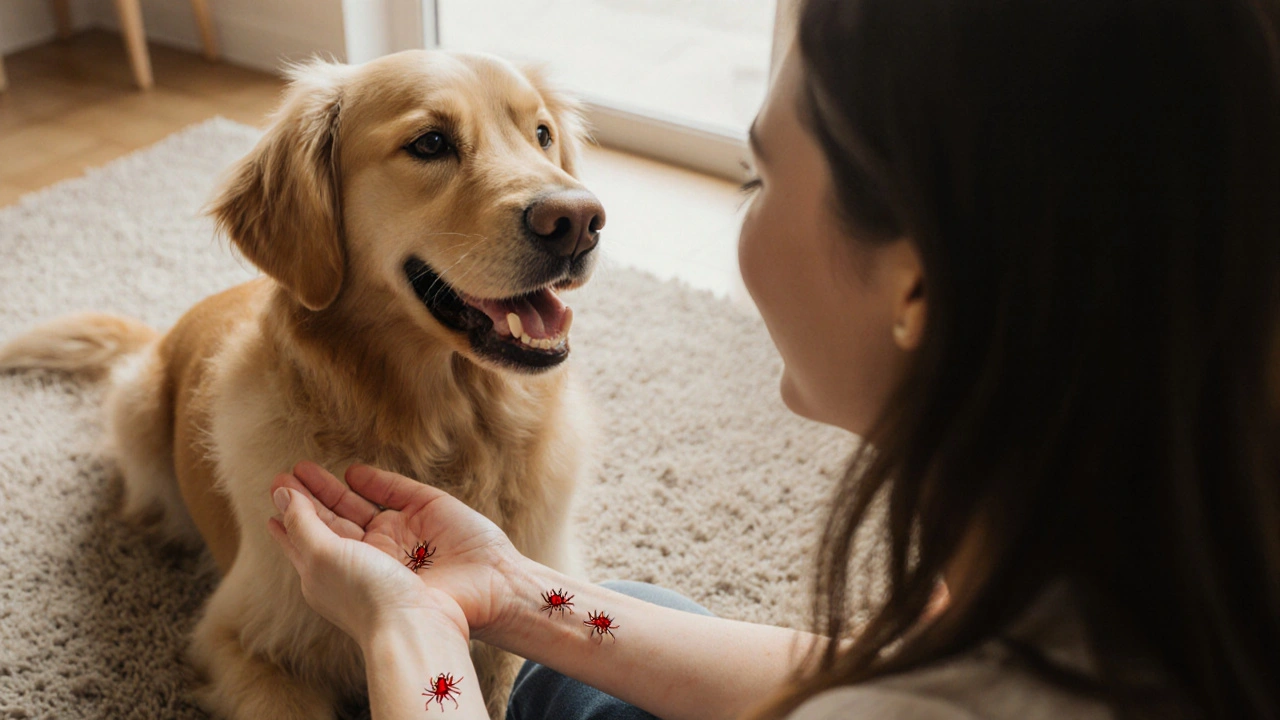Zoonotic Skin Infections: Quick Guide to Causes, Signs, and Simple Prevention
Ever wondered why a scratch from a pet can turn into a rash? That’s a zoonotic skin infection – a skin problem you catch from an animal. It sounds scarier than it is, and the good news is most of them are easy to spot and treat if you know what to look for.
Common Causes You Might Not Expect
Animals carry a lot of tiny organisms that can hop onto your skin. The most frequent culprits are:
- Ringworm – a fungus that makes a round, itchy patch.
- Scabies mites – tiny bugs that burrow under the skin, often from close contact with dogs or cats.
- Cutaneous anthrax – rare, but can happen after handling infected livestock.
- Lyme disease rash – a red, expanding bull’s‑eye spot after a tick bite.
- Mycobacterium ulcerans – a slow‑growing infection that causes painless ulcers, mostly in warm climates.
Most of these infections show up as red, swollen, or scaly patches within a few days of the animal contact. If you notice a new spot after playing with a pet, a farm animal, or even after a hike, consider a zoonotic cause.
How to Tell If It’s Something You Caught From an Animal
Look for these clues:
- Location – areas that touched the animal, like hands, forearms, or legs.
- Pattern – ring‑shaped lesions (ringworm) or a central bite mark (tick‑borne rash).
- Itchiness – many zoonotic skin bugs cause intense itching.
- Progression – a spot that spreads quickly may need a doctor’s eye.
If you’re unsure, it’s always safer to get a quick check‑up. A skin swab or small biopsy can confirm the organism and guide treatment.
While waiting for professional advice, keep the area clean. Wash with mild soap and water, then cover with a breathable dressing if it’s open. Avoid scratching – you can make the infection spread deeper.
Easy Steps to Keep Your Skin Safe Around Animals
Prevention is cheaper than treatment. Here are three practical habits:
- Wash hands after handling pets, livestock, or anything that might have animal fur or soil on it.
- Use protective gear like gloves when cleaning animal enclosures or gardening in tick‑prone areas.
- Check skin regularly after outdoor activities. Early spotting means quicker, simpler care.
Also, keep your pets up to date on deworming and flea‑control meds. Healthy animals are less likely to carry the bugs that cause skin infections.
In short, zoonotic skin infections are common but not mysterious. Recognize the signs, act fast, and practice basic hygiene. Your skin will thank you, and you’ll stay comfortable while enjoying time with animals.
How Pets Spread Skin Parasites: What You Need to Know
Learn how dogs and cats can spread skin parasites like scabies, hookworm larvae, and fleas, and get practical tips to prevent infections at home.
